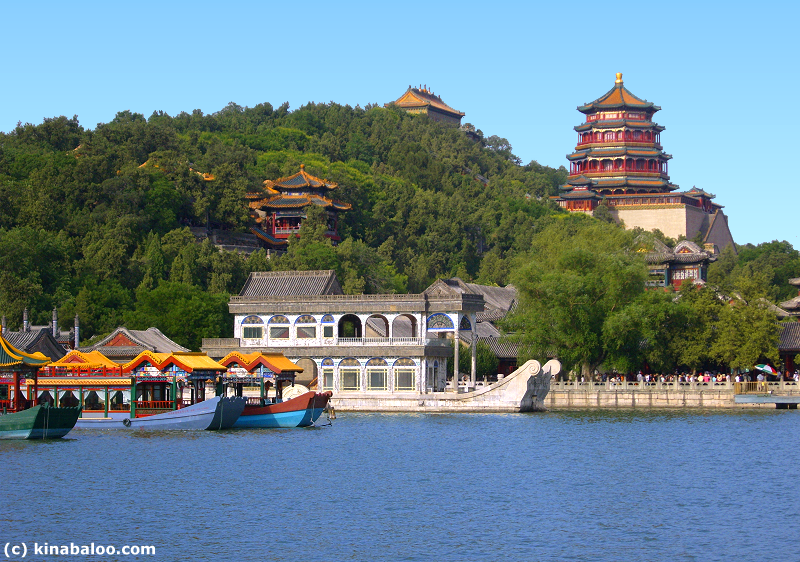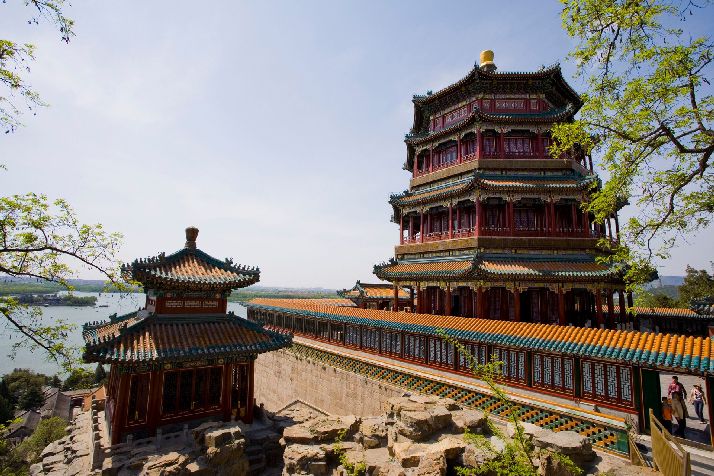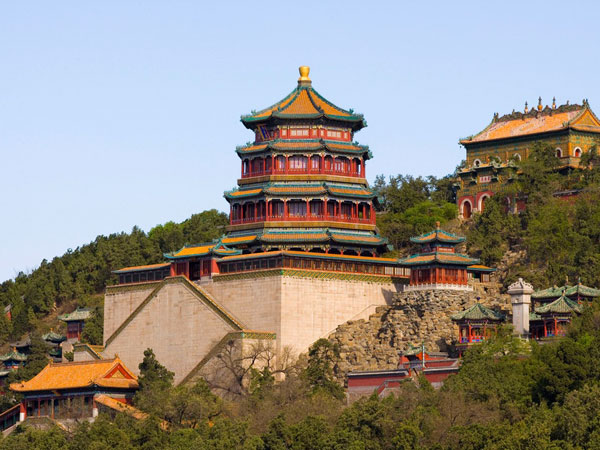



As mandatory a Běijīng sight as the Great Wall or the Forbidden City, the Summer Palace was the playground for emperors fleeing the suffocating summer torpor of the old imperial city. A marvel of design, the palace – with its huge lake and hilltop views – offers a pastoral escape into the landscapes of traditional Chinese painting. It merits an entire day’s exploration, although a (high-paced) morning or afternoon exploring the temples, gardens, pavilions, bridges and corridors may suffice.
The Summer Palace in Beijing integrates numerous traditional halls and pavilions into the Imperial Garden conceived by the Qing emperor Qianlong between 1750 and 1764 as the Garden of Clear Ripples. Using Kunming Lake, the former reservoir of the Yuan dynasty’s capital and Longevity Hill as the basic framework, the Summer Palace combined political and administrative, residential, spiritual, and recreational functions within a landscape of lakes and mountains, in accordance with the Chinese philosophy of balancing the works of man with nature. Destroyed during the Second Opium War of the 1850s, it was reconstructed by Emperor Guangxu for use by Empress Dowager Cixi and renamed the Summer Palace. Although damaged again during the Boxer Rebellion in 1900 it was restored and has been a public park since 1924. The central feature of the Administrative area, the Hall of Benevolence and Longevity is approached through the monumental East Palace Gate. The connecting Residential area comprises three building complexes: the Halls of Happiness in Longevity, Jade Ripples and Yiyun, all built up against the Hill of Longevity, with fine views over the lake. These are linked by roofed corridors which connect to the Great Stage to the east and the Long Corridor to the West. In front of the Hall of Happiness in Longevity a wooden quay gave access by water for the Imperial family to their quarters. The remaining 90% of the garden provides areas for enjoying views and spiritual contemplation and is embellished with garden buildings including the Tower of the Fragrance of Buddha, the Tower of the Revolving Archive, Wu Fang Pavilion, the Baoyun Bronze Pavilion, and the Hall that Dispels the Clouds. Kunming Lake contains three large islands, corresponding to the traditional Chinese symbolic mountain garden element, the southern of which is linked to the East Dike by the Seventeen Arch Bridge. An essential feature is the West Dike with six bridges in different styles along its length. Other important features include temples and monasteries in Han and Tibetan style located on the north side of the Hill of Longevity and the Garden of Harmonious Pleasure to the north-east. As the culmination of several hundred years of Imperial garden design, the Summer Palace has had a major influence on subsequent oriental garden art and culture.
| Opening Hours | Admission Fee | |
|---|---|---|
| April 1 to October 31 | 06:30 - 18:00* Scenic spots are open from 08:30 to 17:00. | CNY 30 |
| November 1 to next March 31 | 07:00 - 17:00 * Scenic spots are open from 09:00 to 16:00. | CNY 20 |